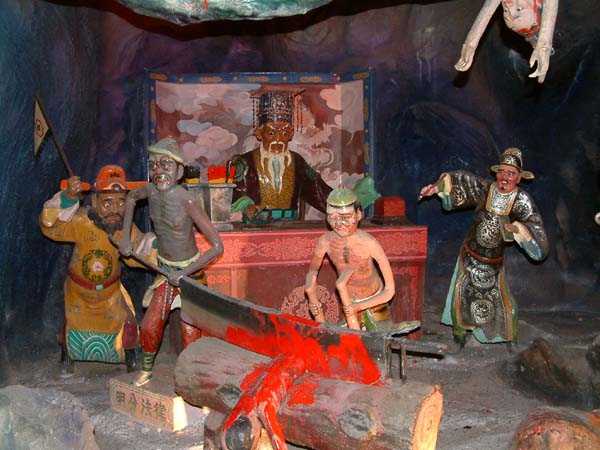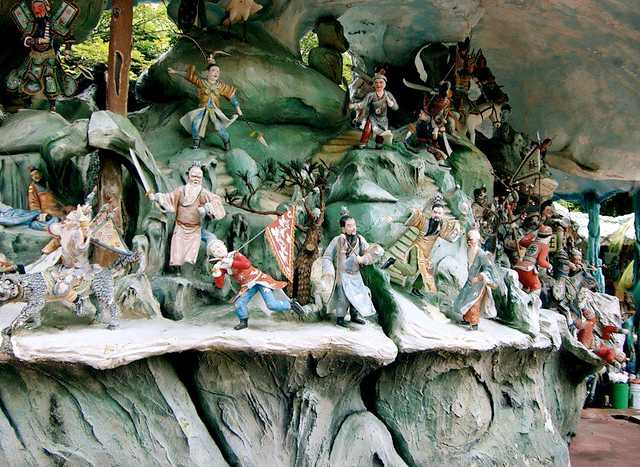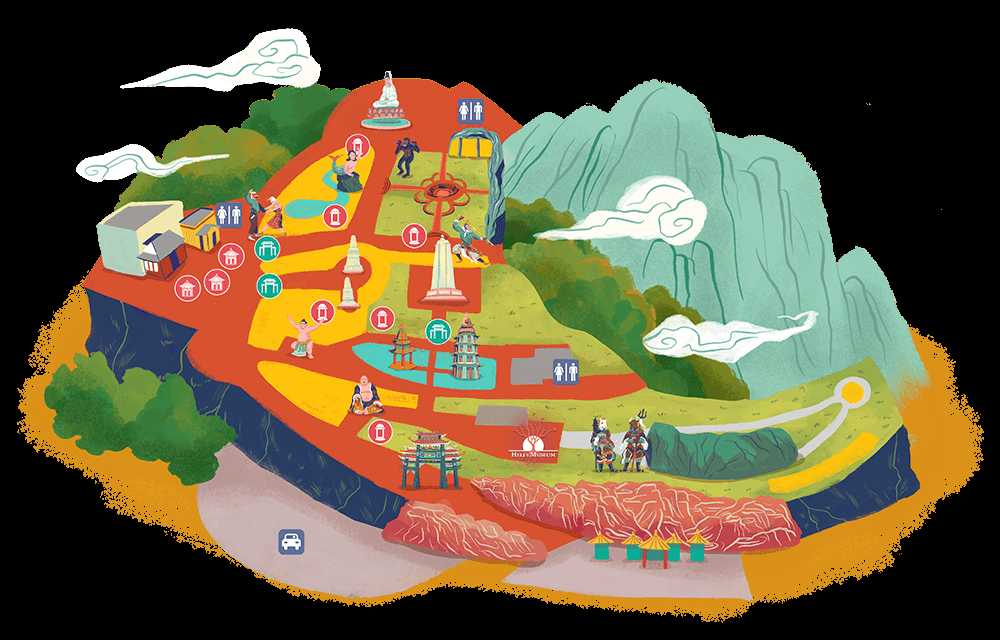Haw Par Villa
₹ 365 onwards
View Singapore PackagesTop Hotel Collections
Weather :
Tags : Museum
Timings : Park: 9:00 AM - 10:00 PM, Last entry at 9:30 PM Ten Courts of Hell: 9:00 AM - 9:30 PM, Last entry at 9:15 PM
Time Required : 2-3 hours
Entry Fee : No Entry Fee
Haw Par Villa, Singapore Overview
Formerly known as the Tiger Balm Garden, Haw Par Villa is an Asian culture theme park and Singapore's largest outdoor art gallery located along the Pasir Panjang Road. Claimed to be the last of its kind in the world, this repository of Asian folklore and myths is famous for depicting the "Ten Courts of Hell" from Chinese folklore.
Apart from the main attraction, Haw Par Villa is home to over 1000 statues and 150 giant dioramas showcasing scenes from Chinese mythology, illustrations and legends of Confucianism. The iconic red brick road, ascending through a majestic entrance archway, weaves through Chinese classics such as the Eight Immortals and Journey to the West. Statues of leopards, dragons and gigantic gorillas lurk in the corners, while the Guardians of the Underworld greets ones on entering the Ten Courts of Hell. Those interested in uncovering the underlying legends and stories of Haw Par Villa should opt for the tours provided by the garden.
Read More on Haw Par Villa
The Ten Courts of Hell
- The entire premise is darkened with life-sized exhibits of the dead and departed people who are seen reclining or sitting on the hilltops and on the trees and shrubs placed around the area.
- One encounters the figure of Hu Fa Shi Zhe immediately on entering the first court. The green face with large, lantern-like eyes seems all-seeing. He is in control of the ghosts and is responsible for upholding the laws of the courts.
- The guardians of the underworld in the form of horse face and ox head figures are found accompanying the dead. It is a part of Chinese mythology that has been depicted to perfection in the courts.
- One has to walk in the dark tunnel-like cavern and pass through each showcasing weird and gruesome statues along with pictorial representations of the punishments meted out to the sinners.
- There are signboards in each court that describes the acts of punishment and explains the evil deed that warrants such a horrific penalty. It is definitely a scary passage that is sure to bring most of the people to the straight path of virtue and shun the vices.

The Dioramas at Haw Par Villa

Haw Par Villa Tours
The Haw Par Villa has over a thousand statues with a story behind each of them. Dive in the engrossing treasure trove of Asian philosophy and cultural heritage, along with enthralling stories behind the park while “finding your Tao in the Haw Par Villa”.
Timings: 10:00 AM - 4:00 PM,
You are to reach at least 15 minutes before the tour commences for registration and payment purposes.
Cost:
Adults: SGD 10,
Children (7 - 12 years old): SGD 5,
2. Journey to Hell - Death and the Afterlife in Haw Par Villa
If you are looking for a daring adventure, step into the Haw Par Villa after dusk envelopes the sky and darkness falls over the park. On this tour, you shall be told about how the Boon family confronted death. Experience the Ten Courts of Hell after dark which has a surreal charm to it altogether.
Timings: 6:30 PM - 8:30 PM,
Cost:
Adults: SGD 18,
Children (7 - 12 years old): SGD 9,
Students (matriculation card is required for verification): SGD 15

Source
How to Reach Haw Par Villa
By Bus: Buses 10, 30, 30E, 51, 143, 188, and 200 arrive at the bus interchange on Pasir Panjang Road. Get on any one of these buses to reach the Haw Par Villa within one minute from the bus stop.
Two-wheeler and four-wheeler parking is available at Haw Par Villa, Westway Shopping Mall and Science Park.
Origin of Haw Par Villa
Aw Boon Haw had a great affinity for Chinese culture and mythology which is reflected in the original fixtures. Every fixture was sculpted under his strict supervision. Later, when the war broke, Aw Boon Haw left Singapore with his family and fled to Yangon (modern-day Rangoon). During those days, the park was used as an observation point for the Japanese Army.
After the war settled, the whole family returned to Singapore and started rebuilding the park. This development took shape of an ongoing process that started in the 1940s and lasted till 1970s. During this phase, many contributions were made by the family members of Aw Boon Haw. His son, Aw Cheng Chye who was fond of travelling expanded the dioramas. He added international corners to the park paying respect to the different cultures he came across during his travels.
In 1988, the Singapore Tourism took over the Tiger Balm Garden and renamed it “Haw Par Villa Dragon World.” “Haw” and “Par” in the park’s name are derived from the names of the two brothers meaning tiger and leopard respectively. Today, Haw Par Villa spans over a massive eight and a half hectare making it Singapore’s largest outdoor art gallery.
Top Hotel Collections
Top Hotels Near Haw Par Villa
Haw Par Villa Reviews

Have a Question on Haw Par Villa?

experience.